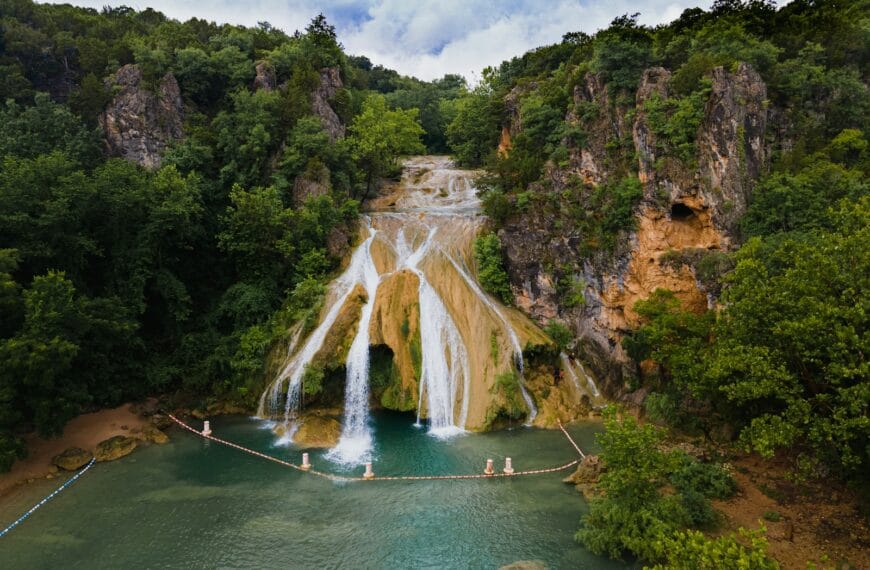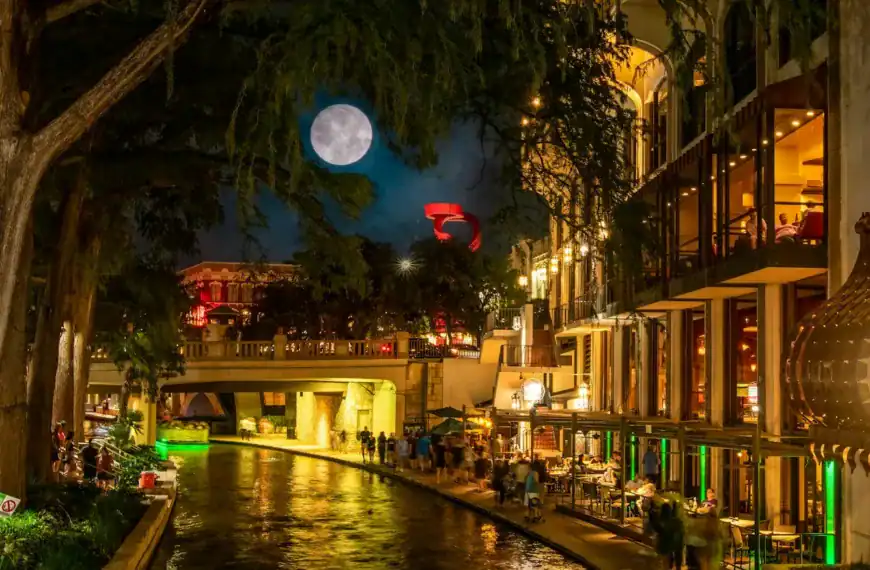Unmissable Things to Do at the Colosseum
Intro to Colosseum Attractions
Towering in the heart of Rome, the Colosseum is more than a symbol — it’s a visceral gateway into the drama, architecture, and ambition of the Roman Empire. This in-depth attractions guide helps you plan the perfect visit: from the best time to go and how to skip the long queues, to discovering surrounding highlights like the Roman Forum and Palatine Hill. You’ll also learn how to pair attractions efficiently, find hidden gems, and access expert tips for touring one of the world’s most iconic ancient sites.
Imagine walking beneath ancient stone arches, hearing the echoes of a 50,000-strong crowd cheering for gladiators below. The Colosseum — or Flavian Amphitheatre — remains one of humanity’s greatest architectural and cultural landmarks. With its storied past, sweeping scale, and surrounding ruins, it offers not just a visit, but a deeply immersive journey into the heart of Roman history.
This guide reveals the Colosseum Tours, must-see attractions, cultural highlights, and timeless experiences that define the Colosseum — and how to see them like a pro.
💡Quick Facts:
Destination: Colosseum
Continent: Europe
Country: Italy
Administrative Division: Lazio Region
City: Rome
Area: ~6 acres (24,000 m²) — amphitheater footprint
Population: N/A (historical monument)
Density: N/A
Capital: Rome (city and national capital)
Regions/Subregions:
• Outer Façade (arches, pilasters)
• Arena Floor (reconstructed stage area)
• Hypogeum (underground tunnels)
• Upper Levels (belvedere viewpoints)
• Roman Forum and Palatine Hill (adjacent archaeological zone)
Official & Regional Languages: Italian (official), English widely used in tourism
Currency: Euro (EUR)
Time Zone(s): GMT+1 (CET), GMT+2 (CEST during Daylight Saving Time)
Airports: Leonardo da Vinci–Fiumicino Airport (FCO), Ciampino Airport (CIA)
Climate: Mediterranean — hot, dry summers; mild, wet winters
Known For: Iconic Roman amphitheater, gladiatorial history, UNESCO World Heritage Site, symbol of Ancient Rome
🛂Arrival Info:
• Schengen visa required for non-EU visitors from visa-required countries
• Visa-free for EU/Schengen nationals and visa-waiver countries (up to 90 days)
• No e-Visa system; Schengen visa application via Italian consulates
• Official Visa Portal: Italy Visa Information
• Customs Info: Agenzia delle Dogane e dei Monopoli
💉Health Info:
• No mandatory vaccines for entry
• High-quality medical facilities in Rome
• Nearest hospitals: Policlinico Umberto I, San Giovanni Addolorata Hospital
• First aid stations and staff present within Colosseum archaeological park
• Travel insurance recommended for non-EU visitors
✅ Check travel insurance options for travel emergencies, delays, and medical needs abroad — Get coverage here
✅ Stay Informed with Official Updates: WHO – International Travel & Health | CDC – Travel health updates
🚨Travel Advisory:
• Italy: U.S. State Dept Level 2: Exercise Increased Caution (due to petty crime in tourist areas)
• Pickpocketing common in crowded attractions and public transport
• Site security: Bag checks and metal detectors at Colosseum entrances
• Emergency services: Police (112), Ambulance (118), Fire (115)
✅ Stay Informed with Official Updates: US Travel Advisory | UK Foreign Travel Advice
📅Holidays:
• Republic Day — June 2 (national holiday)
• Liberation Day — April 25
• Christmas Day — December 25 (special events at Vatican and citywide)
• Easter Week — Processions and events in Rome
• Natale di Roma — April 21 (celebration of Rome’s founding, often includes Colosseum events)
💰Visitor Info:
• Entry Fee: Approx. €18 (includes Roman Forum and Palatine Hill)
• Free entry on the first Sunday of every month (expect large crowds)
• Credit cards accepted for ticket purchases; cashless preferred
• Guided tours and special access tours (underground, upper levels) require advance booking
• Tipping customary for private guides (10–15%)
• Average Visit Budget: Budget €30–50 (DIY), Midrange €80–120 (guided), Luxury €200+ (VIP tours)
✈️Airports:
FCO – Leonardo da Vinci/Fiumicino: Main international hub (~45 min)
CIA – Ciampino Airport: Low-cost carriers (~35 min)
Direct train or taxi to Rome Termini, then metro to Colosseo station
✅ Delayed or canceled flight? Check if you’re eligible for compensation
🚍Transport:
• Metro: Line B (Colosseo station) directly serves the Colosseum
• ATAC city buses and trams stop nearby
• Walking is recommended within the Colosseo District
• Taxi ranks available near Piazza Venezia
• Hop-on-hop-off tourist buses operate citywide circuits including the Colosseum
✅ Book reliable airport transfers and in-city rides in advance. Reserve your ride here
📶Connectivity:
• SIM cards from TIM, Vodafone, WindTre available at airports and city kiosks
• Strong 4G/5G coverage in Rome city center
• Free public Wi-Fi hotspots in Piazza del Colosseo and nearby tourist zones
• Roaming agreements with EU mobile providers; local SIMs recommended for non-EU travelers
✅ Stay connected abroad with affordable eSIM data packs. Get your eSIM here
📜Laws & Etiquette:
• Eating and drinking is prohibited within the Colosseum structure
• Climbing or touching monuments is strictly forbidden; fines apply
• Large bags, backpacks, and sharp objects are not allowed inside
• Modest attire recommended for religious sites (Vatican, nearby churches)
• Tipping is customary in service sectors, though not mandatory
🛡️Emergency Info:
• Emergency Numbers: Police (112), Ambulance (118), Fire (115)
• Tourist police assistance kiosks in central Rome
• Visitor help desks located near Colosseum ticket offices
• Embassies and consulates in Rome provide assistance to foreign nationals
✅ Use embassy locator tools: Embassies Worldwide
🌦️Weather:
• Summer (June–September): Hot, temperatures 28°C–35°C (82°F–95°F), peak tourist season
• Spring (April–May) and Autumn (September–October): Mild, best visiting months
• Winter (November–March): Cooler, wetter, fewer crowds
• Early morning or late afternoon visits recommended to avoid peak heat and crowds
✅ Stay prepared—check the weather forecast for your destination — Weather Forecast
Why the Colosseum Is a Must-Visit Attraction in Rome
Few places on Earth offer such a concentrated dose of history, power, and preservation. Built in 72 AD under Emperor Vespasian, the Colosseum isn’t just a ruin — it’s a living lesson in Roman society, imperial propaganda, and engineering brilliance.
The broader Colosseum area — including the Roman Forum, Palatine Hill, Arch of Constantine, and nearby museums — creates a dynamic outdoor complex. Many travelers miss hidden layers or spend too much time in lines, which is why curated entry tips, combo tickets, and guided experiences make all the difference.
Architectural Masterpiece
Completed in 80 AD, the Colosseum remains the largest ancient amphitheater still standing. Its innovative design, from retractable awnings to underground elevators, showcases the pinnacle of Roman engineering.
Living History
The Colosseum hosted gladiatorial combats, public executions, and grand spectacles that defined Roman culture. Visiting this site offers a direct, tactile connection to those stories.
Versatile Visitor Experiences
Unlike static museum exhibits, the Colosseum invites you to walk its arena, descend into the hypogeum, or view the structure from panoramic terraces. Every visit can be tailored, making it an evolving experience.
Iconic Landmarks and Historic Sites
The Colosseum (Flavian Amphitheatre)
The main event. Standing 159 feet high and nearly 2,000 years old, the Colosseum once hosted gladiatorial games, mock sea battles, and imperial spectacles. Explore its tiered seating, arena floor, and hypogeum (underground chambers).
Visitor Tips: Book timed entry at least 1–2 weeks in advance. Early morning or dusk offers best lighting. Night tours offer magical photo ops.
Roman Forum
Just a few steps from the Colosseum, this was ancient Rome’s center of politics, law, and religion. Stroll past ruins of the Senate, triumphal arches, and temples that shaped an empire.
Visitor Tips: Use the same ticket as the Colosseum. Join a tour or download an audio guide to make sense of the fragmented ruins.
Palatine Hill
Above the Forum, this lush archaeological area is where Rome began — home to emperors, villas, and panoramic views. See remains of the Palace of Domitian and take in Rome from above.
Visitor Tips: Wear walking shoes; terrain is uneven. Mornings are cooler and less crowded.
Arch of Constantine
Erected in 315 AD, this towering arch celebrates Constantine’s victory over Maxentius. It’s one of the most photographed structures outside the Colosseum.
Visitor Tips: Free and open 24/7. Great stop for golden hour photos post-Forum.
Ludus Magnus (Gladiator School Ruins)
Visible through a street-level grate, this lesser-known site was where gladiators trained before fighting in the Colosseum.
Visitor Tips: Viewable from Via Labicana. Combine with a self-guided walking loop.
Museums, Galleries & Cultural Spaces
Colosseum Underground & Belvedere Levels
Accessible only via guided tour, these areas reveal the Colosseum’s backstage — from animal cages to pulley systems and upper tiers with panoramic views.
Visitor Tips: Must be booked with a special tour (not included in standard tickets). Ideal for history buffs.
Palatine Museum (Museo Palatino)
Nestled on Palatine Hill, this small but rich museum displays imperial artifacts, frescoes, and sculptures excavated from the hill.
Visitor Tips: Entry included in the Forum ticket. Combine with a shaded walk through Farnese Gardens.
Capitoline Museums (Nearby)
While not inside the Colosseum complex, these museums offer some of the best Roman sculptures and ruins relocated from the area — including original bronze statues.
Visitor Tips: Book tickets separately. Closed Mondays. Worth the short uphill walk from the Forum.
Natural Attractions & Scenic Spots
Palatine Hill Gardens (Orti Farnesiani)
Laid out in the 16th century, these Renaissance-style gardens add serenity to the ruins — with citrus trees, pergolas, and shaded benches overlooking the Forum.
Visitor Tips: A peaceful stop after climbing the hill. Bring water in summer.
Aventine Hill Viewpoints
Just a 15-minute walk away, the Orange Garden (Giardino degli Aranci) and Aventine Keyhole offer unforgettable views of Rome and St. Peter’s dome framed through a secret gate.
Visitor Tips: Combine with a sunset stroll or picnic. Free entry.
Via Sacra (Sacred Road)
This ancient Roman road connects the Colosseum to the Forum, once used for triumphal processions. Today, it offers a beautiful walk through living ruins.
Visitor Tips: Walk slowly and bring a guidebook or app to understand each structure.
Unique & Unexpected Places to Visit
Basilica of San Clemente
Just a short walk from the Colosseum, this church hides three layers of history — a 12th-century basilica, a 4th-century church, and a 1st-century Roman house and Mithraic temple below.
For something different: Descend through centuries beneath your feet. Entry is €10 and includes an audio guide.
Domus Aurea (Nero’s Golden House)
Emperor Nero’s opulent palace, buried after his death, is now partially excavated and open for guided weekend visits.
Hidden away from the crowds: See ancient frescoes that inspired Renaissance masters. Book in advance; entry is limited and includes VR experiences.
Celio Hill & Villa Celimontana
South of the Colosseum, this peaceful hill offers green space, old churches, and local picnic spots away from the tourist bustle.
For slow travelers: Ideal for catching your breath between attractions. Entrance is free.
Santi Quattro Coronati Church
This medieval fortress-like basilica offers peaceful cloisters and beautiful frescoes — often missed by visitors rushing to the Colosseum.
Visitor tip: Free entry, donations welcome. Combine with a walk through lesser-known Roman neighborhoods.
How to Plan Your Attraction Visits in Rome
- Use the Colosseum Archaeological Park ticket, which includes the Colosseum, Roman Forum, and Palatine Hill over 24 hours.
- Book in advance online, especially for guided tours or underground access.
- Start early: Enter the Colosseum at opening time, then move to the Forum and Palatine Hill.
- Restroom access: Limited inside sites. Facilities available near entrances.
- Accessibility: The Colosseum has ramps and lifts for limited mobility, but the Forum terrain is uneven.
- Avoid peak weekends: Visit on weekdays or during shoulder months (April, October).
- Bring sun protection: Shade is minimal; summer heat can be intense.
- Use Rome’s Metro Line B to get off at “Colosseo” station — the entrance is directly across the street.
Best Time to Visit the Colosseum
Planning your visit around the right timing can dramatically elevate the experience.
Seasonal Recommendations:
- Spring (April–June): Mild temperatures and vibrant landscapes make this a prime visiting window.
- Autumn (September–October): Enjoy warm days and smaller crowds compared to the summer peak.
- Winter (November–February): A quieter period offering a serene atmosphere, perfect for in-depth exploration.
Time of Day Tips:
Evening Tours (After 6:00 PM): Opt for special access evening slots to avoid daytime heat and enjoy an atmospheric experience.
Early Morning (8:30–10:00 AM): Best for tranquil walks and photography.
Travel Tips for Seeing the Best Colosseum Has to Offer
- Book top attractions 2–3 weeks ahead, especially for special access areas.
- Start your day at the Colosseum, then loop to the Forum and Palatine Hill.
- Pair your visit with nearby churches or neighborhoods for variety.
- Use audio guides or downloadable apps for context during self-guided visits.
- Bring a refillable water bottle — Rome has public fountains (nasoni) with safe drinking water.
- Dress for uneven terrain: supportive shoes are essential.
- Don’t rush — allow at least 3 hours for the Colosseum complex.
- Watch out for closures due to political events or restoration work.
ExpEnhance Your Visit with These Unique Experiences
Gladiator School Workshop
Channel your inner warrior at a Roman Gladiator School. Don traditional attire, learn sword techniques, and engage in mock duels guided by instructors.
Ancient Roman Cooking Classes
Delve into culinary history by recreating dishes based on ancient Roman recipes. These workshops provide a flavorful glimpse into the daily lives of Roman citizens.
Aventine Hill Garden Walks
Escape the bustling crowds with a serene stroll through the Orange Garden on Aventine Hill, offering panoramic views of Rome and the Colosseum in the distance.
Book immersive Rome tours and experience unforgettable things to do in Rome — from sacred temple rituals and highland treks to floating markets and lakeside food adventures.
Tours and Experiences to Book in Advance
- Book immersive Colosseum arena floor tours with early morning access for a crowd-free experience.
- Join expert-led hypogeum tours that reveal the Colosseum’s underground secrets.
- Reserve combined tickets for the Colosseum, Forum, and Palatine Hill for a comprehensive historical day.
- Secure spots on nighttime Colosseum tours for an atmospheric, illuminated walk-through.
- Explore gladiator workshops for an interactive, family-friendly Roman experience.
Local Tips for a Meaningful Visit
- Cultural Etiquette: Respect preservation zones—never climb or touch off-limit ruins.
- Language Help: Basic Italian greetings go a long way with local guides.
- Solo Traveler Advice: Opt for guided group tours for richer storytelling and enhanced safety.
- Photography Tip: Use early morning light for the best Colosseum façade shots.
- Navigation App: Download offline maps of Rome’s ancient district to ease navigation between sites.
Where to Go Next in Rome
- Vatican Museums & Sistine Chapel: Dive into unparalleled art collections and sacred spaces.
- Pantheon & Piazza Navona: Explore Rome’s best-preserved temple and the vibrant baroque square nearby.
- Trastevere District: Wander through charming alleys lined with authentic eateries and artisan shops.
- Campo de’ Fiori Food Markets: Experience Rome’s culinary pulse through local markets and tastings.
Final Planning Checklist for the Colosseum
- Verify tour meeting points to avoid confusion on arrival day
- Reserve Colosseum tour tickets online (arena floor and hypogeum tours recommended)
- Plan your visit early morning or book an evening tour slot for fewer crowds
- Combine with Roman Forum & Palatine Hill for a full-day ancient Rome itinerary
- Wear comfortable walking shoes and bring sun protection
- Download an offline Colosseum audio guide app
- Check for ongoing restoration areas or special exhibition events
- Bring a refillable water bottle—fountains are available on-site
Discover unforgettable things to do in Rome — and start planning with our Rome Travel Guide and Rome Tours today.










